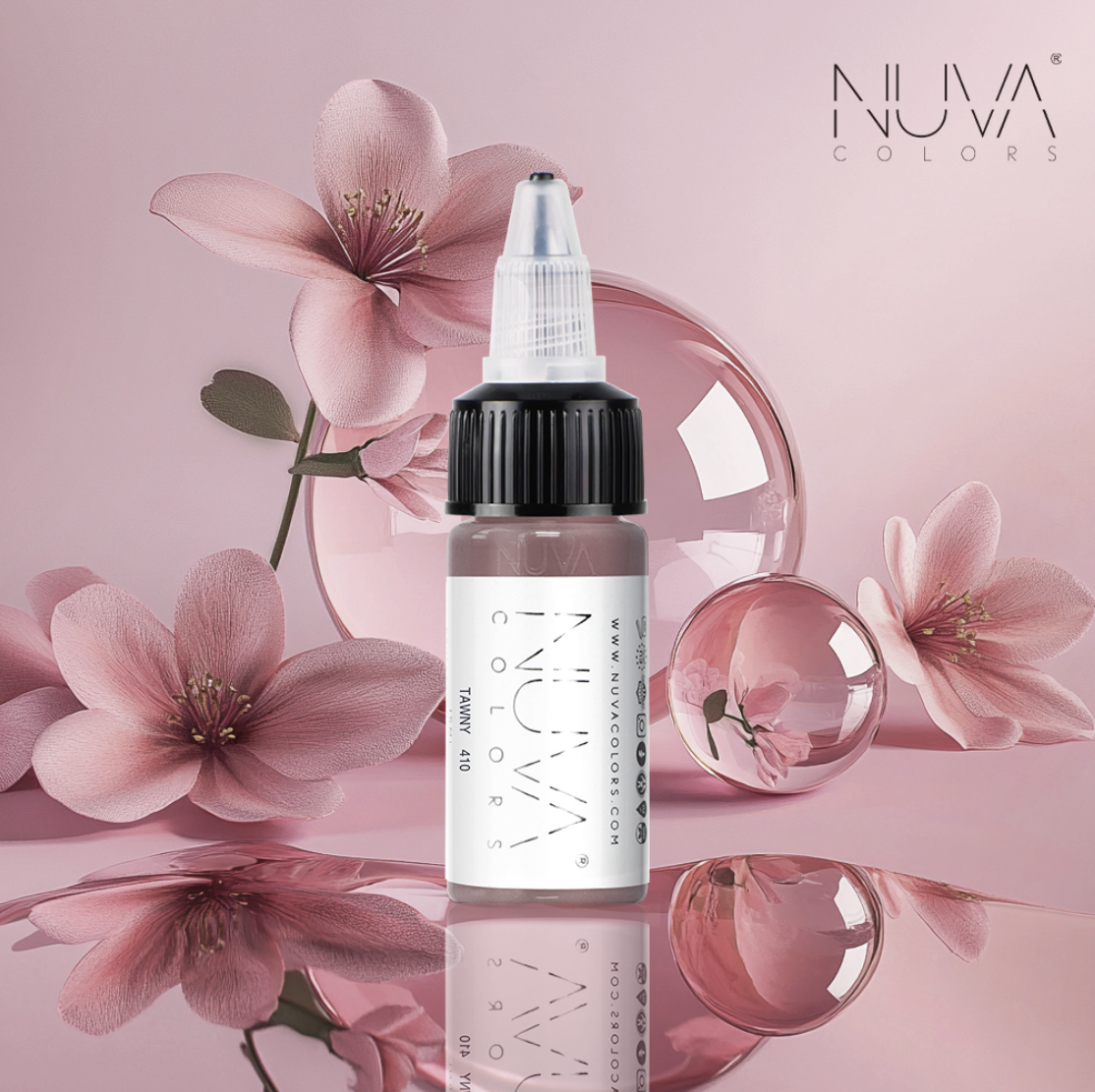
Oct 03 , 2024
Understanding Color Correction
Color correction is a critical aspect of Permanent Makeup (PMU) and Scalp Micropigmentation (SMP), requiring a deep understanding of pigmentology, skin undertones, and advanced techniques to achieve optimal results.
Whether you're correcting faded pigments, neutralizing unwanted hues, or adjusting tones to match a client's evolving preferences, mastering advanced color correction techniques is essential for any PMU or SMP artist aiming for excellence.
Understanding the Science of Pigments
In PMU and SMP, pigments interact with skin undertones and can change over time due to factors like sun exposure, skin regeneration, and the body's immune response. It's imperative to understand the composition of pigments, how they heal in the skin, and the variables that affect their longevity and appearance.
Pigment Composition
Pigments are composed of organic and inorganic compounds, each with distinct properties. Organic pigments tend to be brighter but less stable, while inorganic pigments offer longevity but may lack vibrancy. Knowledge of these properties helps in selecting the right pigments for correction procedures.
Skin Undertones and Overtones
Skin undertones play a significant role in how pigments appear after healing. Warm undertones can make pigments appear cooler, while cool undertones can warm up pigments. Recognizing and accounting for this interaction is crucial in achieving the desired outcome.
Common Color Correction Scenarios
Faded or Discolored Eyebrows
Over time, eyebrow pigments can fade to undesirable hues like blue, gray, or red. Correcting these colors involves neutralizing the unwanted tones and reintroducing the desired pigment.
Lip Pigment Darkening
Some clients may experience darkening of lip pigments due to hyperpigmentation or incorrect pigment selection. Adjusting the color requires careful application of lightening agents and appropriate pigments.
SMP Color Mismatch
In SMP, a mismatch between the pigment and the client's hair or scalp color can result in an unnatural appearance. Correcting this requires adjusting the pigment shade and possibly addressing undertone issues.
Advanced Correction Techniques
Color Neutralization
Color neutralization involves using complementary colors to cancel out unwanted hues. For instance, to correct blue eyebrows, an orange-based pigment can neutralize the blue tones.
Technique Application:
- Assessment: Evaluate the current pigment color and skin undertone.
- Selection: Choose a pigment opposite on the color wheel to the unwanted hue.
- Application: Carefully overlay the neutralizing pigment over the existing work.
Pigment Lightening or Removal
In cases where the pigment is too dark or saturated, lightening or removal may be necessary before correction.
Methods Include:
- Saline Removal: Using a saline solution to lift pigments from the skin.
- Laser Removal: Employing laser treatments to break down pigment particles.
- Chemical Lighteners: Applying lightening agents specifically designed for PMU.
Layering Techniques
Layering involves applying multiple pigment layers to build the desired color depth and tone gradually.
Considerations:
- Healing Time: Allow adequate healing between sessions to assess true pigment results.
- Pigment Selection: Use pigments that blend well and are compatible in composition.
Undertone Adjustment
Adjusting the undertone can correct the overall appearance of the pigment.
Approach:
- Warm-Up or Cool-Down Pigments: Add warm or cool modifiers to the pigment mix.
- Custom Blending: Create a custom pigment blend tailored to the client's skin undertone.
Case Studies
Case Study 1: Correcting Blue Eyebrows
A client presents with eyebrows that have faded to a blue-gray hue due to previous microblading with ashy pigments.
Solution:
- Neutralization: Apply an orange-based corrector to counteract the blue tones.
- Re-pigmentation: After neutralization, implant a suitable brown pigment to achieve the desired eyebrow color.
Case Study 2: SMP Color Mismatch
A client with a warm scalp undertone receives SMP with pigments that appear too cool, resulting in a noticeable mismatch.
Solution:
- Assessment: Determine the extent of the color discrepancy.
- Adjustment: Introduce warmer pigments to balance the cool tones, possibly requiring multiple sessions for gradual correction.
Tips for Successful Color Correction
-
Comprehensive Consultation: Always conduct a thorough consultation to understand the client's history, previous procedures, and desired outcomes.
-
Patch Testing: Perform patch tests when using new pigments or correction techniques to ensure client safety.
-
Education and Training: Stay updated with the latest advancements in pigment technology and correction methods through continuous education.
-
Color Theory Mastery: Deepen your understanding of color theory, including the color wheel, to make informed decisions during correction.
-
Documentation: Keep detailed records of pigments used, techniques applied, and client responses for future reference.
Conclusion
Advanced color correction in PMU and SMP is a nuanced process that demands a blend of scientific knowledge, artistic skill, and practical experience. By mastering these techniques, artists can effectively address a range of pigment challenges, delivering results that enhance client satisfaction and uphold professional standards.
Paul Park
Nuva Colors
Part 2: Launching Your PMU Business
References
For further reading and to deepen your understanding of advanced color correction techniques in PMU and SMP, consider exploring the following resources:
-
Professional Organizations:
- Society of Permanent Cosmetic Professionals (SPCP) – Provides educational materials and guidelines on best practices. Visit www.spcp.org.
- American Academy of Micropigmentation (AAM) – Offers certification programs and resources. Visit www.micropigmentation.org.
-
Educational Books:
- Chalene, B. (2017). Permanent Makeup: Tips and Techniques for Color Correction. Beauty Ink Publications.
- Avila, M. (2019). Mastering the Art of Micropigmentation. Professional Beauty Press.
-
Industry Journals:
- Journal of Aesthetic and Cosmetic Dermatology – Features articles on the latest advancements in PMU and SMP.
- Permanent Cosmetic Magazine – Provides insights into new techniques and case studies.
-
Online Courses and Webinars:
- Look for advanced training courses by recognized PMU academies that focus on color correction and pigmentology.






